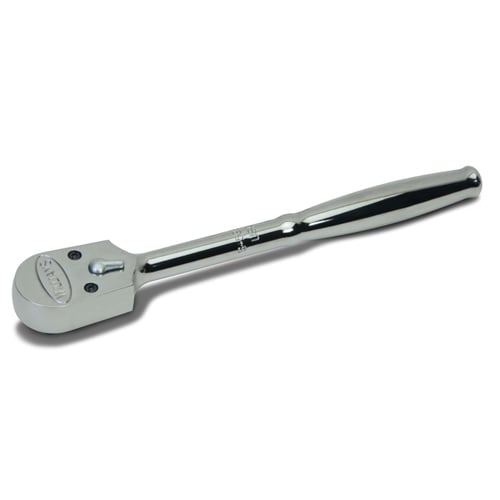Hand Tools

The Complete Guide to Ratcheting Wrenches
When tackling nuts and bolts efficiently, ratcheting wrenches have revolutionized how professionals and DIY enthusiasts work. These versatile tools combine a wrench’s convenience with a ratchet’s efficiency, making tasks faster and more manageable. In this comprehensive guide, we’ll delve into the world of ratcheting wrenches, exploring their benefits, types, applications, and tips for choosing the right one for your needs.
The Advantages of Ratcheting Wrenches
- Speed and Efficiency: Ratcheting wrenches eliminates the need to reposition the tool for each turn. The ratcheting mechanism allows continuous motion, drastically reducing the time needed to complete a task.
- Tight Spaces: With their compact design, ratcheting wrenches excel in tight spaces where a standard wrench might not have enough room to operate.
- Ease of Use: Ratcheting wrenches are user-friendly. The reversible ratcheting mechanism enables tightening and loosening without lifting the tool off the fastener.
- Precision: Ratcheting wrenches provide better control over torque application, reducing the risk of over-tightening and potential damage.
Types of Ratcheting Wrenches
- Combination Ratcheting Wrench: This type features a ratcheting box end on one side and an open end on the other. It’s versatile and suitable for a wide range of tasks.
- Flex-Head Ratcheting Wrench: Equipped with a flexible joint, these wrenches allow access to fasteners at various angles, enhancing their versatility in confined spaces.
- Stubby Ratcheting Wrench: These compact wrenches are designed for tight spaces where more extended tools can’t reach. They offer excellent maneuverability.
- Double-Ended Ratcheting Wrench: With two different sizes of ratcheting box ends on a single wrench, these tools are perfect for situations requiring multiple sizes.
Choosing the Right Ratcheting Wrench
- Size: Ensure the wrench fits the nuts and bolts you commonly use. Consider a set with various sizes for versatility.
- Quality: Invest in high-quality ratcheting wrenches made from durable materials. They’ll last longer and provide reliable performance.
- Flexibility: Depending on your projects, consider combining different types, such as standard and flex-head, to cover a wide range of scenarios.
- Comfort: Look for ergonomic handles and grips that reduce hand fatigue during extended use.
Best Practices for Using Ratcheting Wrenches
- Choose the Right Direction: Ratcheting wrenches have a switch to change the direction of rotation. Ensure it’s in the right position before starting.
- Proper Positioning: Position the wrench on the fastener securely to prevent slipping and damage.
- Maintain the Tool: Regularly clean and lubricate the ratcheting mechanism to ensure smooth operation and longevity.
- Avoid Excessive Force: Ratcheting wrenches provide considerable torque, but avoid applying excessive force, as it can damage the tool and fastener.
Ratcheting wrenches have earned their place as essential tools in any toolbox due to their efficiency, versatility, and time-saving capabilities. By understanding the types available, selecting the right size, and following best practices for use, you’ll unlock their full potential for a wide range of projects. Whether you’re a professional mechanic or a DIY enthusiast, ratcheting wrenches are your go-to solution for making your mechanical tasks smoother, quicker, and more precise.